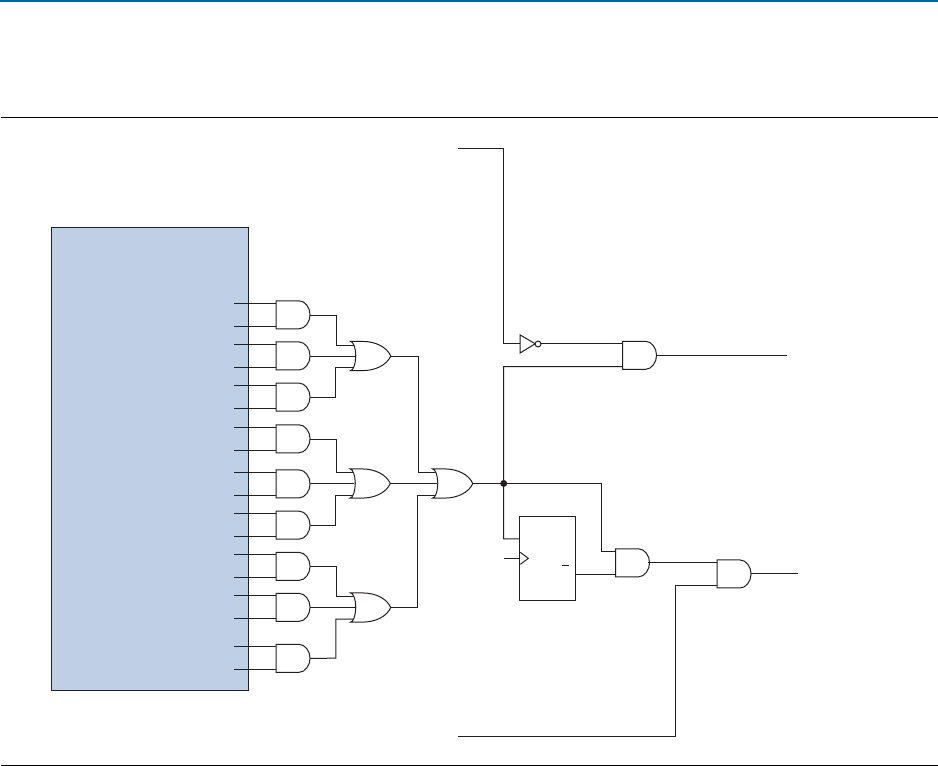User guide
Table Of Contents
- Cyclone V Hard IP for PCI Express User Guide
- Contents
- 1. Datasheet
- 2. Getting Started with the Cyclone V Hard IP for PCI Express
- 3. Getting Started with the Avalon-MM Cyclone Hard IP for PCI Express
- Running Qsys
- Customizing the Cyclone VHard IP for PCI Express IP Core
- Adding the Remaining Components to the Qsys System
- Completing the Connections in Qsys
- Specifying Clocks and Interrupts
- Specifying Exported Interfaces
- Specifying Address Assignments
- Simulating the Example Design
- Simulating the Single DWord Design
- Understanding Channel Placement Guidelines
- Adding Synopsis Design Constraints
- Creating a Quartus II Project
- Compiling the Design
- Programming a Device
- 4. Parameter Settings for the Cyclone V Hard IP for PCI Express
- 5. Parameter Settings for the Avalon-MM Cyclone V Hard IP for PCI Express
- 6. IP Core Architecture
- Key Interfaces
- Protocol Layers
- Multi-Function Support
- PCI Express Avalon-MM Bridge
- Avalon-MM Bridge TLPs
- Avalon-MM-to-PCI Express Write Requests
- Avalon-MM-to-PCI Express Upstream Read Requests
- PCI Express-to-Avalon-MM Read Completions
- PCI Express-to-Avalon-MM Downstream Write Requests
- PCI Express-to-Avalon-MM Downstream Read Requests
- Avalon-MM-to-PCI Express Read Completions
- PCI Express-to-Avalon-MM Address Translation for Endpoints
- Minimizing BAR Sizes and the PCIe Address Space
- Avalon-MM-to-PCI Express Address Translation Algorithm
- Single DWord Completer Endpoint
- 7. IP Core Interfaces
- Cyclone V Hard IP for PCI Express
- Avalon-MM Hard IP for PCI Express
- Physical Layer Interface Signals
- Test Signals
- 8. Register Descriptions
- Configuration Space Register Content
- Altera-Defined Vendor Specific Extended Capability (VSEC)
- PCI Express Avalon-MM Bridge Control Register Access Content
- Avalon-MM to PCI Express Interrupt Registers
- PCI Express Mailbox Registers
- Avalon-MM-to-PCI Express Address Translation Table
- Root Port TLP Data Registers
- Programming Model for Avalon-MM Root Port
- PCI Express to Avalon-MM Interrupt Status and Enable Registers for Root Ports
- PCI Express to Avalon-MM Interrupt Status and Enable Registers for Endpoints
- Avalon-MM Mailbox Registers
- Correspondence between Configuration Space Registers and the PCIe Spec 2.1
- 9. Reset and Clocks
- 10. Transaction Layer Protocol (TLP) Details
- 11. Interrupts
- Interrupts for Endpoints Using the Avalon-ST Application Interface
- Interrupts for Root Ports Using the Avalon-ST Interface to the Application Layer
- Interrupts for Endpoints Using the Avalon-MM Interface to the Application Layer
- Interrupts for End Points Using the Avalon-MM Interface with Multiple MSI/MSI-X Support
- 12. Optional Features
- 13. Flow Control
- 14. Error Handling
- 15. Transceiver PHY IP Reconfiguration
- 16. SDC Timing Constraints
- 17. Testbench and Design Example
- Endpoint Testbench
- Root Port Testbench
- Chaining DMA Design Examples
- Test Driver Module
- Root Port Design Example
- Root Port BFM
- BFM Procedures and Functions
- 18. Debugging
- A. Transaction Layer Packet (TLP) Header Formats
- Additional Information

11–6 Chapter 11: Interrupts
Interrupts for Endpoints Using the Avalon-MM Interface to the Application Layer
Cyclone V Hard IP for PCI Express December 2013 Altera Corporation
User Guide
Figure 11–5 shows the logic for the entire interrupt generation process.
The PCI Express Avalon-MM bridge selects either MSI or legacy interrupts
automatically based on the standard interrupt controls in the PCI Express
Configuration Space registers. The
Interrupt
Disable
bit, which is bit 10 of the
Command
register (at Configuration Space offset 0x4) can be used to disable legacy
interrupts. The
MSI Enable
bit, which is bit 0 of the
MSI
Control
Status
register in the
MSI capability register (bit 16 at configuration space offset 0x50), can be used to
enable MSI interrupts.
Only one type of interrupt can be enabled at a time. However, to change the selection
of MSI or legacy interrupts during operation, software must ensure that no interrupt
request is dropped. Therefore, software must first enable the new selection and then
disable the old selection. To set up legacy interrupts, software must first clear the
Interrupt
Disable
bit and then clear the
MSI enable
bit. To set up MSI interrupts,
software must first set the
MSI enable
bit and then set the
Interrupt
Disable
bit.
Figure 11–5. Avalon-MM Interrupt Propagation to the PCI Express Link
SET
CLR
DQ
Q
Interrupt Disable
(Configuration Space Command Register [10])
Avalon-MM-to-PCI-Express
Interrupt Status and Interrupt
Enable Register Bits
A2P_MAILBOX_INT7
A2P_MB_IRQ7
A2P_MAILBOX_INT6
A2P_MB_IRQ6
A2P_MAILBOX_INT5
A2P_MB_IRQ5
A2P_MAILBOX_INT4
A2P_MB_IRQ4
A2P_MAILBOX_INT3
A2P_MB_IRQ3
A2P_MAILBOX_INT2
A2P_MB_IRQ2
A2P_MAILBOX_INT1
A2P_MB_IRQ1
A2P_MAILBOX_INT0
A2P_MB_IRQ0
AV_IRQ_ASSERTED
AVL_IRQ
MSI Enable
(Configuration Space Message Control Register[0])
MSI Request
PCI Express Virtual INTA signalling
(When signal rises ASSERT_INTA Message Sent)
(When signal falls DEASSERT_INTA Message Sent)










